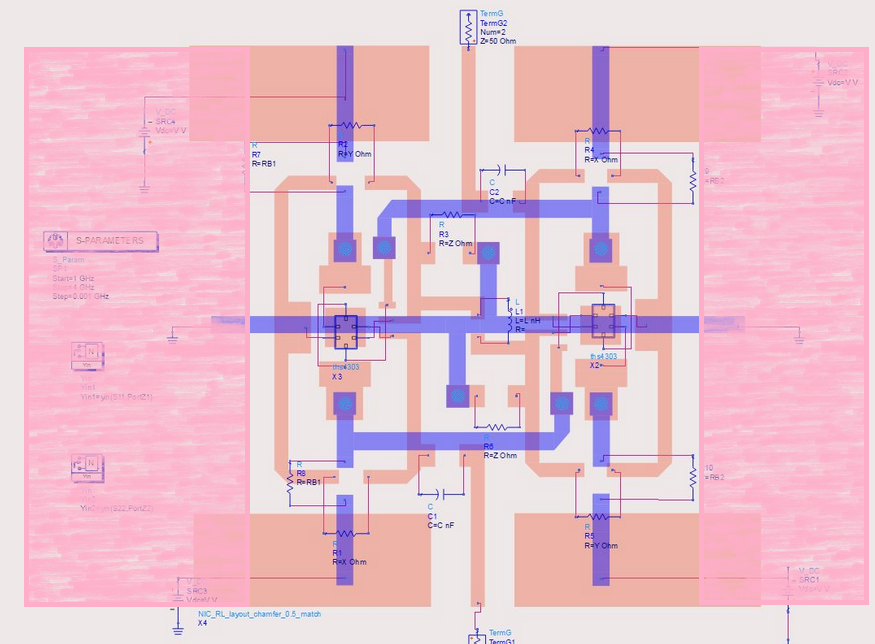Other Parts Discussed in Thread: TINA-TI
hi there,
I am rahul vishwakarma i have bought this IC 4303 for the application of Negative impedance converter.The simulation part is done and i am getting result. The problem arises when i have fabricated the structure and measuring the result but the desired result is not coming.
1. I have checked the IC in Khz range (by making voltage follower circuit) and is seems ic was giving desired response.My doubt is how i can check ic in GHz range (my desired freq range is 2 to 3.5 GHz)?
2. The output which i am getting (by applying 6 to 9 volt dc in +-VDC) S21 is around -20db which is not desired it should come in between 3db to -7db. Seems like the Opamp IC is not turning ON. Can you suggest me what should be taken care to turn on IC in GHz range.
3. Power down pin of IC i have connected to +VDC supply(ranging from 1.1-2.5 volt) (as suggested in datasheet to turn on IC min 1.1 volt should be given).
4.The desired result of NIC ckt has came in schematic Simulation and cosimulation (ckt+ layput) design is achieved. But while measuring practically it is not coming.I have doubts weather IC is turning on or not as s21is around -20db.
looking forward to hear from your side as soon as possible
Thank you
Rahul


